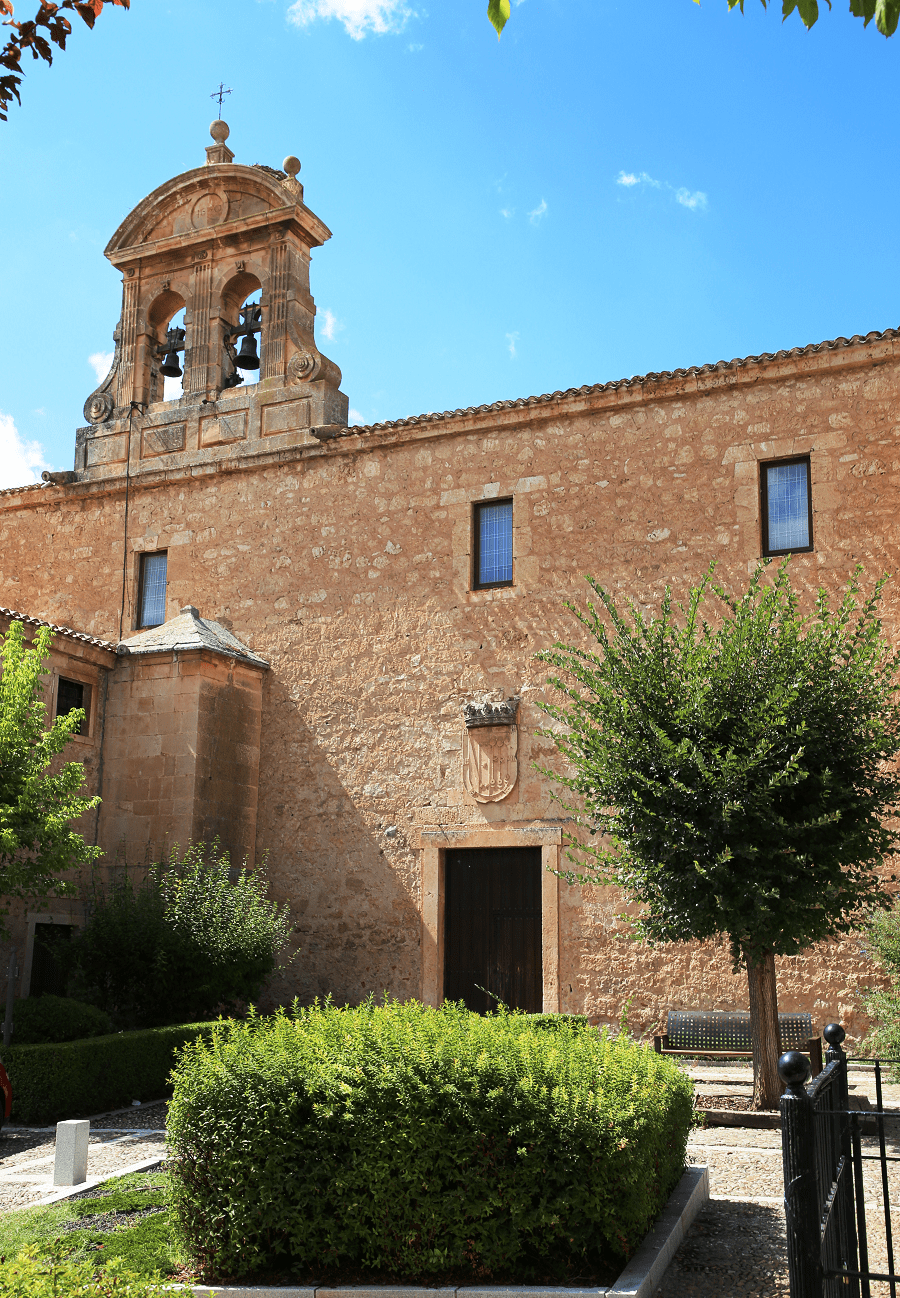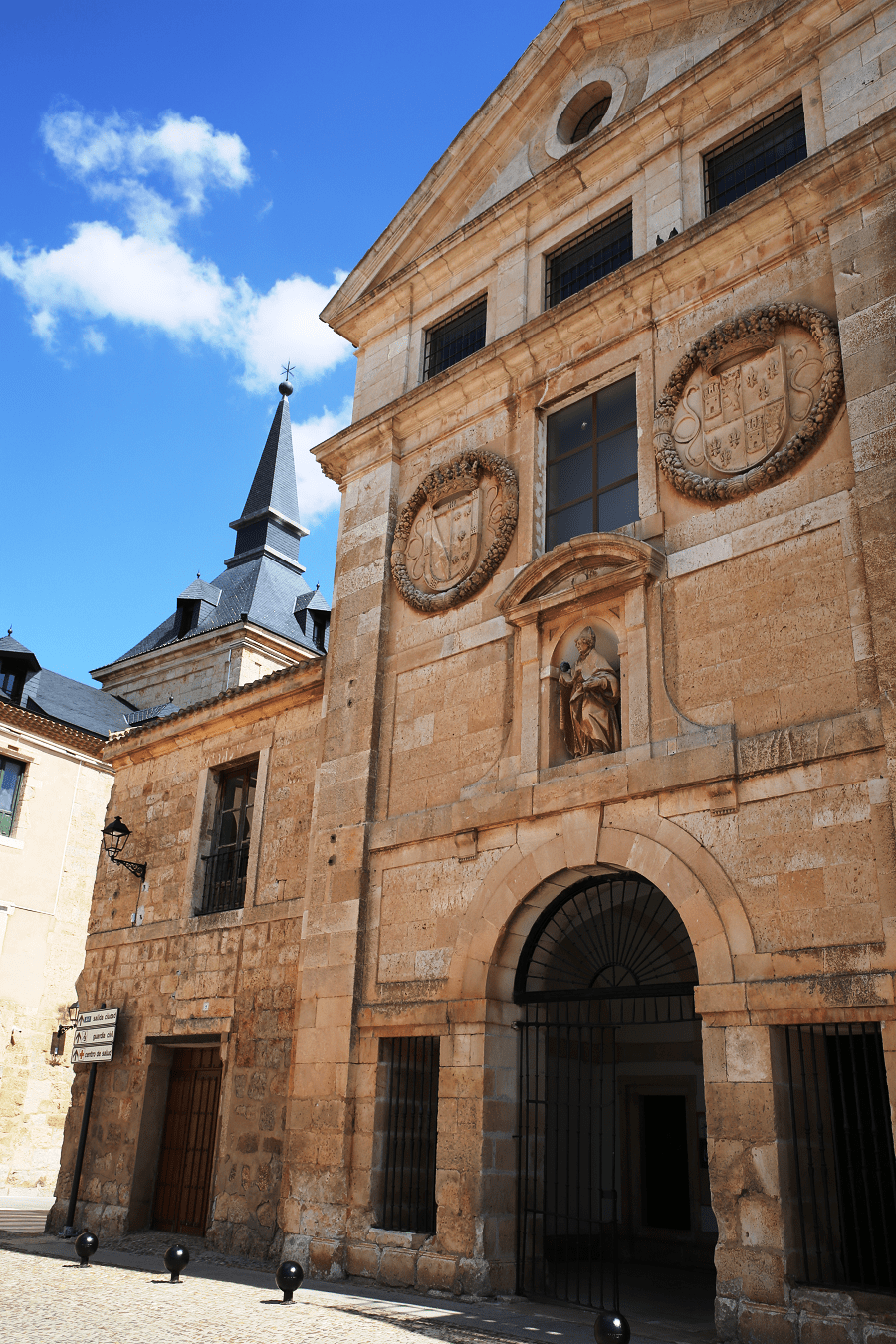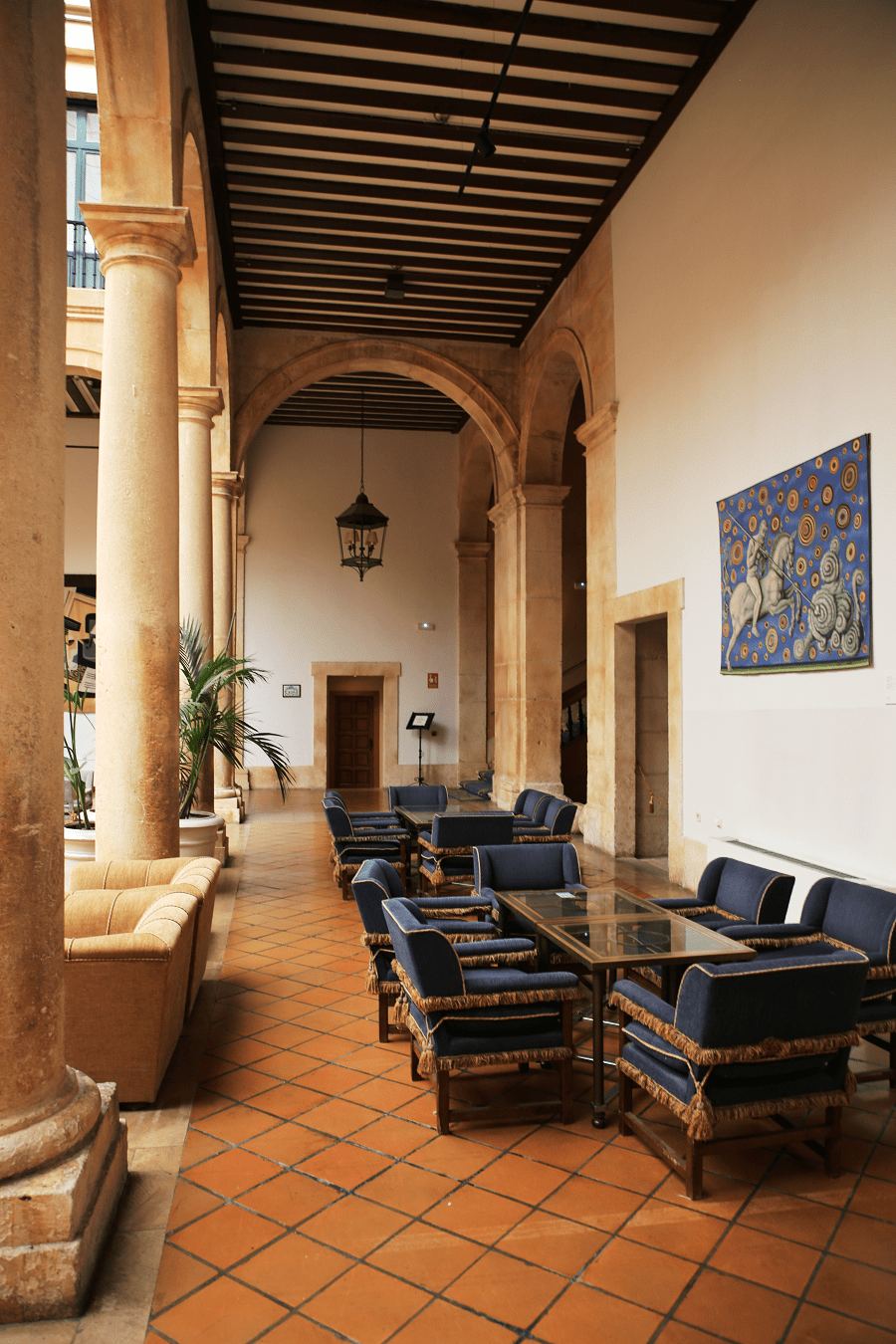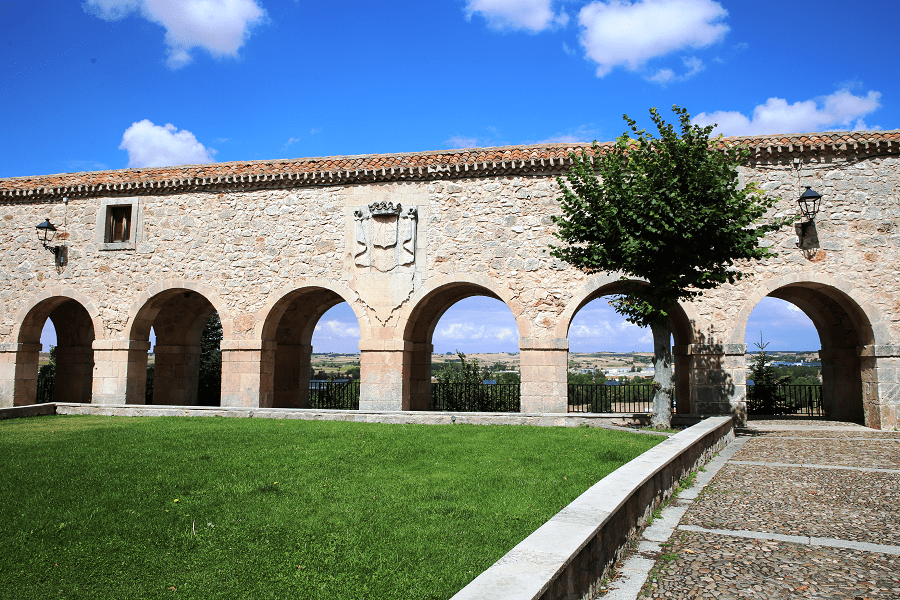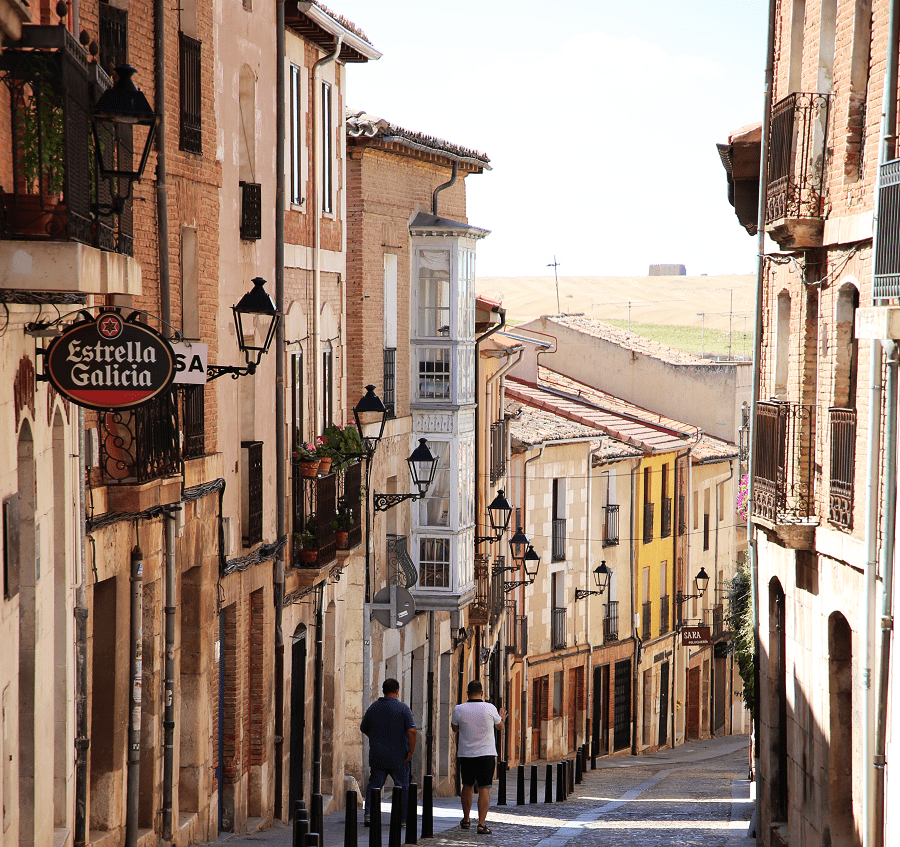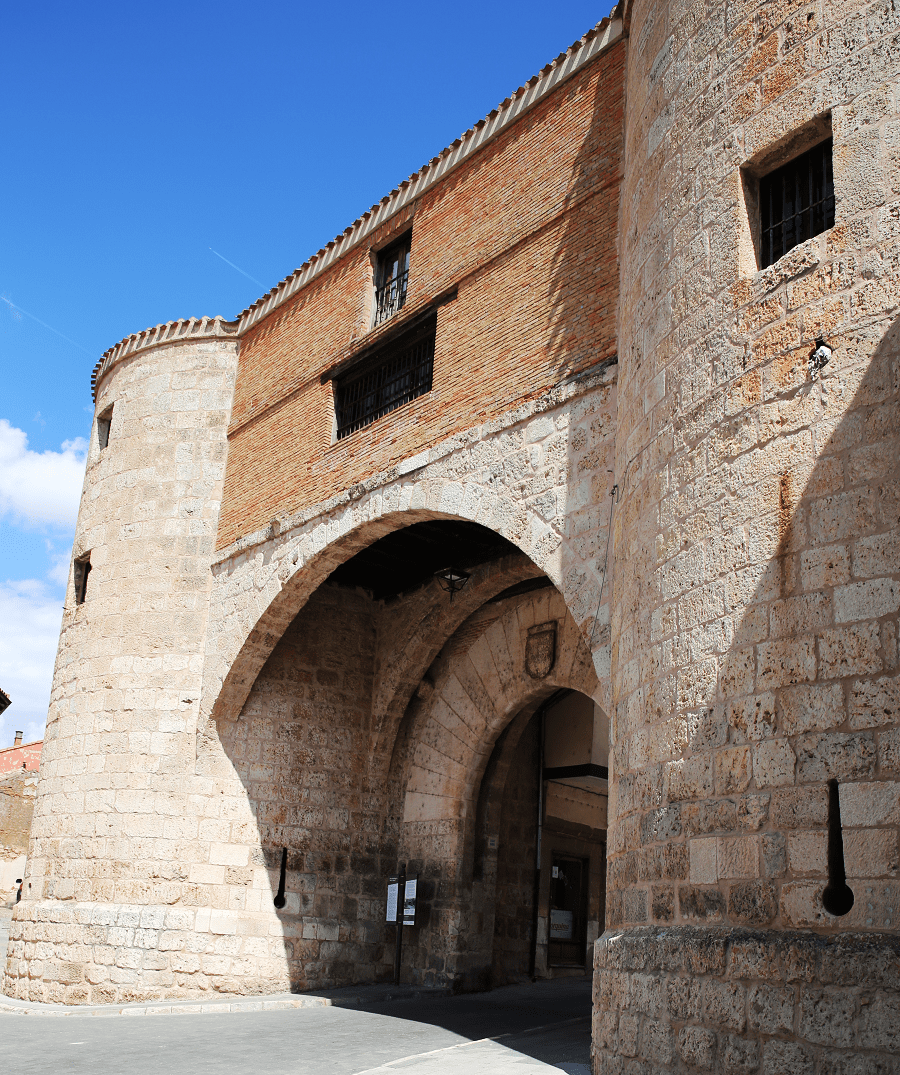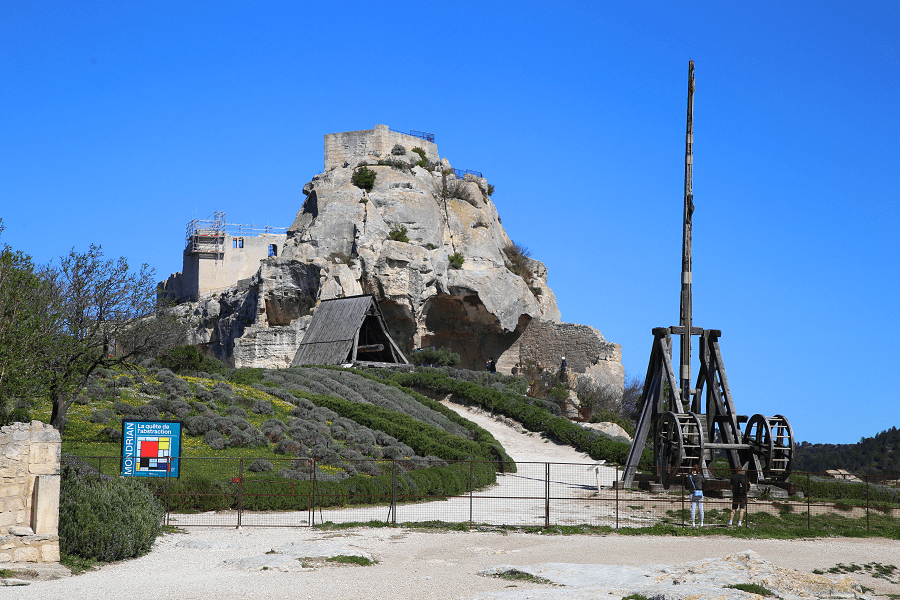Lerma is a city and a municipality in the province of Burgos, in the autonomous community of Castile and León, Spain. It is located on a hill that dominates the plain of the river Arlanza.
The historic center of the town, which is also known as “Villa Ducal de Lerma” as it has the title of town, enjoys the status of an asset of cultural interest, in the category of Historical Complex.
Touristically, it forms with the neighboring towns of Covarrubias and Santo Domingo de Silos the so-called Arlanza Triangle.
It has important monuments dating from the 17th century, which were built by the Duke of Lerma: Francisco Gómez de Sandoval y Rojas, 1st Duke of Lerma, 5th Marquess of Denia, 1st Count of Ampudia (1552/1553 – 17 May 1625), was a favourite of Philip III of Spain, the first of the validos (‘most worthy’) through whom the later Habsburg monarchs ruled. He was succeeded by the Count-Duke of Olivares.
The village is home to the headquarters of the Spanish wine denominación de origen protegida Arlanza DOP.
Tourism and main attractions
Plaza Mayor
Also known as the Great Plaza, it was considered an urban model. It was used as a market for transactions, as a bullfighting arena in the so-called “holidays of the sleepy bull”. It is of great dimensions, it has an area of about 7000 m². At present it is closed with two arcaded wings, but originally it was arcaded on all sides. In this square there are two important monuments: the Ducal Palace and the San Blas monastery.
Ducal Palace of Lerma
The ducal palace of Lerma occupies an entire side of the main square. Originally it had some immense gardens below, on the riverbank with fountains, mansions, and seven hermitages, of which only one remains, called Christ. All the documents referring to its construction are preserved. Today it is a hotel.
Work of Herrerian style from the 17th century, construction began in 1601 commissioned by Francisco de Sandoval y Rojas, 1st Duke of Lerma. Its architect was Francisco de Mora, considered one of the best of the time. In 1615 the works were already very advanced and the masonry, plaster and flooring work was subcontracted.
The palace was to courtier Valladolid, what El Escorial was to Madrid.
The future King Luis I of Spain married in the Ducal Palace of Lerma on January 20, 1722 with the French princess Luisa Isabel de Orleáns, daughter of Felipe II of Orleáns, then regent of France, when he was fifteen years old and she was twelve.
Jail Door
Also called the arch of the Jail. Of the four entrances that the town had, it is the only surviving medieval wall gate. Through it you enter the historic center, being located in the extreme west of the municipality, parallel to the Madrid highway.
The arch is flanked by two cylindrical towers with loopholes. Although built of stone, it has a brick addition to the top, the result of an extension carried out in 1610 with the aim of turning it into a prison, hence its name.
Currently, the building is the headquarters of the Arlanza Denomination of Origin.
Collegiate Church of San Pedro
Designed in 1613 by the architect Fray Alberto de la Madre de Dios, it was consecrated in 1617 with great celebrations for the Court and the nobles, which lasted 13 days. The duke managed to make this abbey directly dependent on Rome.
It has three naves in the ambulatory. The altarpiece is baroque with six images by the sculptor Juan de Avila. A valuable kneeling sepulchral statue of Archbishop Cristóbal de Rojas is preserved, in gilt bronze, the work of Juan de Arfe. There are two organs from 1615 and 1616, some of the oldest on the peninsula, on which baroque concerts are given.
Convent of San Blas
Located in a square attached to the ducal square, called San Blas. Designed in 1613 by Fray Alberto de la Madre de Dios, construction began in 1613 to house Dominican nuns. By the same architect as the Ducal Palace, until the 19th century it was linked to it by a cantilevered passageway with three arches. You can still see the starts of the arches. Today it is inhabited by Dominican Sisters who make ceramics.
Monastery of the Ascension of Our Lord
Also called Santa Clara convent, inhabited by Poor Clare Franciscans. It was the first convent to be built and its founder was Doña Mariana de Padilla, daughter-in-law of the Duke of Lerma, in 1604. The Infanta Margarita Francisca was baptized in its church in 1610.
The façade is austere; It has a door with pilasters and coats of arms of the Padilla, Sandoval and Rojas families. The belfry is baroque with two holes and scrolls. It is inhabited by HH. Clarisas.
Best restaurants
There is one Michelin list restaurant in the city:
Casa Brigante, Plaza Mayor 5, 33 – 45 EUR • Regional Cuisine, Castilian Cuisine
How to get to?
From Burgos 27 min (40.7 km) via A-1
From Valladolid 1 hr 20 min (114 km) via A-62 and N-622
From Madrid 2 hr 15 min (211 km) via A-1
Main information
Area: 166 km² (municipality)
Coordinates: 42°01′35″N 3°45′20″W
Population: 2609
Languages: Spanish
Currency: Euro
Visa: Schengen
Time: Central European UTC +1




